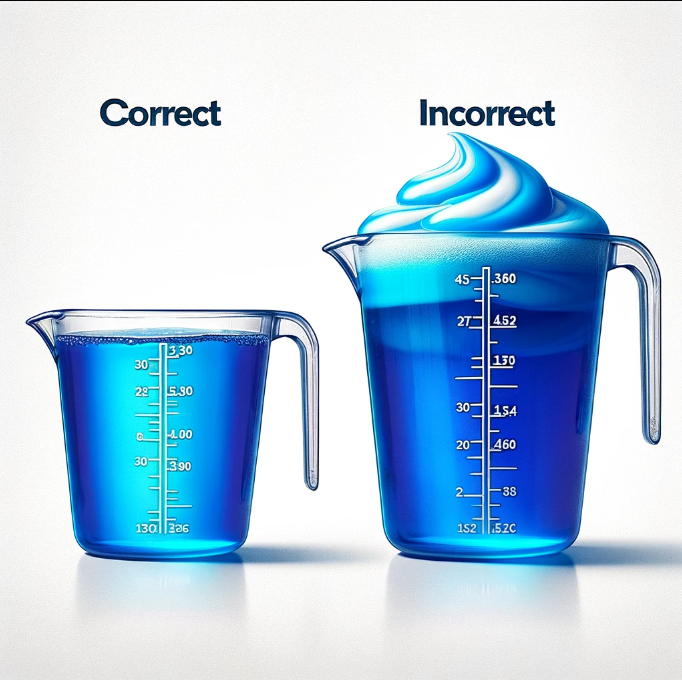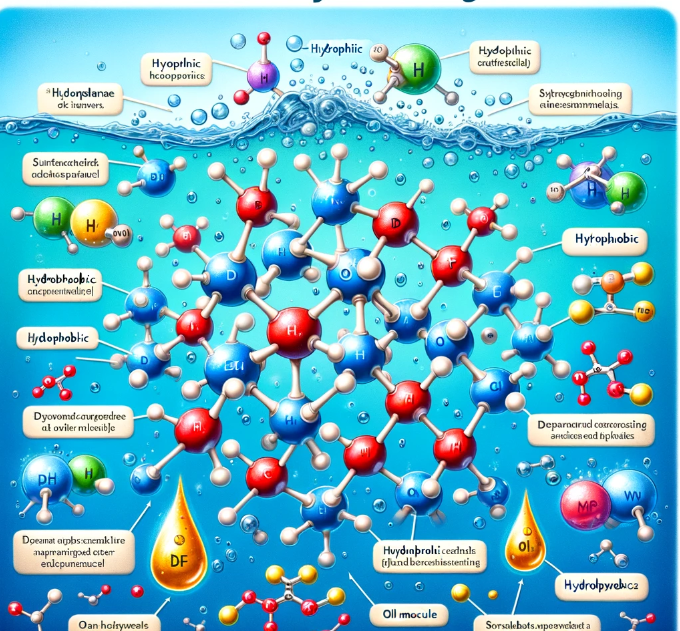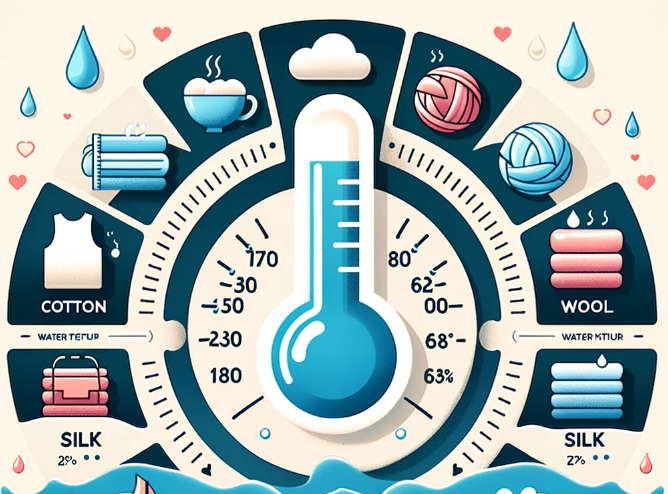Unveiling Secrets: Detergent’s Role in Stain Formation Revealed
Sommaire
Introduction: Unraveling the Mystery of Detergent and Clothing Stains
Have you ever pulled clothes out of the wash only to find unexpected stains that weren’t there before? The culprit might be closer than you think. In this enlightening blog post, we delve into a common yet surprising issue in laundry care: the role of detergent in creating clothing stains. Yes, the very agent we rely on to get our clothes clean can sometimes leave behind marks of its own. We’ll explore how and why this happens, debunk prevalent myths about detergents, provide useful tips for optimal usage, and answer some frequently asked questions. Get ready to transform your laundry routine and maximize the effectiveness of your detergent!
When Detergent Becomes the Stain Maker
When we think of laundry, detergents naturally come to mind as the solution, not the problem. However, in a twist that might surprise many, detergents can sometimes be the very cause of those perplexing stains on your clothes. Understanding this issue is crucial in ensuring your laundry stays spotless and vibrant.
Misunderstanding Detergent Usage One of the key problems arises from a misunderstanding of how much detergent to use. It’s a common misconception that more detergent equals cleaner clothes. This is far from the truth. Overusing detergent can leave a residue on your clothing, which not only dulls the fabric but can also attract dirt and grime, leading to stains. This is especially true for high-efficiency washers that use less water. Here, the right amount of detergent is critical.
The Role of Water Hardness Water hardness plays a significant role in how effectively a detergent works. In areas with hard water, detergents can react with the minerals in the water, leaving deposits on your clothes that appear as stains. These are not your typical dirt-based stains but a result of chemical reactions between detergent and hard water minerals.
The Complexity of Modern Detergents Today’s detergents are complex. They contain various ingredients, each serving a purpose – from cleaning agents to fragrances and brighteners. Sometimes, these components don’t fully dissolve or rinse away, especially in colder water temperatures. The residue left behind can manifest as mysterious stains, often visible after drying.

Detergent Insights: Understanding the Science Behind the Suds
Detergent Insights: Understanding the Science Behind the Suds Diving deeper into the world of laundry, it’s essential to understand how detergents work and why they sometimes leave stains, contrary to their intended purpose. This insight into detergents is not just fascinating but also practical for everyday laundry tasks.
The Chemistry of Detergents At its core, detergent is designed to attract and suspend dirt and oils away from fabric. This process is facilitated by surfactants, the active agents in detergents. Surfactants have two ends: one that is attracted to water (hydrophilic) and another that is attracted to grease and dirt (hydrophobic). When you wash your clothes, these surfactants surround dirt particles, lifting them off the fabric and keeping them suspended in the water. However, if the detergent is not fully rinsed out, the residue can attract and hold onto new dirt, leading to stains.
Enzymes in Detergents Modern detergents often contain enzymes, which are biological substances that help break down complex stains like blood, grass, or food. Each enzyme type targets a specific type of stain. While incredibly effective, if clothes are not thoroughly rinsed, these enzymes can remain on the fabric, potentially leading to discoloration or irritation for sensitive skin.
The Impact of Detergent Formulation Detergents come in various forms: powders, liquids, pods, and more. Each type has its own unique formulation and concentration. For instance, liquid detergents are better at removing greasy or oily stains, while powder detergents are typically more effective at removing mud or dirt. Choosing the wrong type for your specific laundry needs can result in less than optimal cleaning, and sometimes, stains.

User-Friendly Tips: Making the Most of Your Detergent
To prevent detergents from becoming the culprits behind clothing stains, it’s vital to use them effectively. Here are some user-friendly tips that will help you get the best out of your detergent, ensuring your clothes stay clean and stain-free.
Right Amount, Right Results
- Measure, Don’t Guess: Always use the measuring cap or spoon provided with your detergent. Following the recommended amount on the label is key. This prevents the excess residue that can attract more dirt and cause stains.
- Consider Your Load Size: Adjust the amount of detergent based on the size of your laundry load. Less detergent for smaller loads, more for larger or dirtier loads.
Water Temperature Matters
- Follow Fabric Care Labels: Some detergents work best in warm water, while others are effective in cold water. Check your clothing’s care label and choose the water temperature accordingly to ensure effective cleaning without residue.
- Cold Water for Delicate Fabrics: Delicate fabrics often require cold water to prevent damage. Ensure your detergent is formulated to work well in lower temperatures.
Choosing the Right Detergent
- Match Detergent to Fabric Type: Use a detergent that’s formulated for the type of fabric you’re washing. For example, use gentle detergents for delicate fabrics.
- High-Efficiency (HE) Detergents for HE Washers: If you have a high-efficiency washer, use HE detergents. They produce fewer suds and are specifically designed for these types of machines.
Regular Maintenance of Washing Machine
- Clean Your Washer Regularly: Residue from detergents can build up in your washing machine
- , leading to stains on clothes. Clean your washer according to the manufacturer’s instructions to keep it working efficiently.

Myth Busting: Separating Fact from Fiction in Detergent Use
When it comes to laundry and detergents, there are numerous myths that can lead to confusion and improper use. Busting these myths is essential for achieving the best laundry results and prolonging the life of your clothes.
Myth 1: More Detergent Equals Cleaner Clothes
Reality Check: Using more detergent than recommended doesn’t make your clothes cleaner. In fact, it can leave a residue that attracts dirt, causing more stains. Stick to the recommended amount for optimal results.
Myth 2: All Detergents Work the Same
The Truth: Not all detergents are created equal. Different formulations are designed for specific purposes – like color protection, fabric softness, or stain removal. Choose a detergent that matches your laundry needs.
Myth 3: Detergent is Only for Cleaning Clothes
Beyond Cleaning: While the primary role of detergent is to clean, modern detergents also offer additional benefits like fabric conditioning, color protection, and scent. Understanding these benefits can help you choose the right product.
Myth 4: Cold Water Washes Don’t Clean Effectively
Cold Water Efficiency: Modern detergents are formulated to work effectively in cold water. Cold water washing can save energy and prevent color fading or fabric damage, while still cleaning your clothes effectively.

FAQ Section: Answering Your Detergent Queries
In this section, we address some of the most frequently asked questions about detergents. These answers aim to provide clarity and help you make informed decisions when it comes to laundry care.
Q1: How Do I Choose the Right Detergent for Different Types of Fabrics?
A1: The key is to read the labels. For delicate fabrics like silk and wool, opt for a gentle detergent. For everyday cottons and synthetics, a standard detergent works well. For heavily soiled work clothes or athletic wear, consider a detergent with extra stain-fighting power.
Q2: Can I Use Regular Detergent in a High-Efficiency (HE) Washing Machine?
A2: It’s not recommended. HE washing machines are designed to use low-sudsing HE detergents. Using regular detergent can produce too many suds and affect the machine’s performance and efficiency. Q3: Does Detergent Expire?
A3: Yes, detergents can lose effectiveness over time. Liquid detergents typically have a shelf life of six months to one year post-opening. Powder detergents can last longer, but it’s best to use them within a year for optimal performance.
Q4: Is Liquid Detergent Better than Powder?
A4: Neither is inherently better; it depends on your laundry needs. Liquid detergents are great for grease and oil stains and dissolve easily in cold water. Powder detergents are typically more effective on mud and ground-in dirt and can be more economical.
Q5: How Can I Prevent Detergent Residue on Clothes?
A5: Always use the recommended amount of detergent, and choose the correct wash cycle for your load. Additionally, make sure your washing machine is not overloaded, as this can hinder proper rinsing.
Conclusion: Embracing the Full Potential of Detergents
In our journey through “The Surprising Culprit Behind Your Clothing Stains: Detergent Insights,” we’ve uncovered the often-overlooked aspects of detergent use and its impact on laundry. From understanding the common problems to debunking myths, and from offering practical tips to answering your most pressing questions, this comprehensive guide aims to transform your approach to using detergents.
Remember, the key to successful laundry is not just about choosing a detergent but using it correctly. By measuring the right amount, selecting the appropriate type for your fabrics, and understanding the nuances of water temperature and washing machine maintenance, you can enhance the longevity and appearance of your clothes.
Equipped with these insights and tips, you’re now ready to tackle laundry challenges more effectively. Embrace these detergent insights not just as a means to cleaner clothes, but as a step towards smarter, more efficient, and eco-friendly laundry practices.
As we conclude, always stay informed about the latest developments in detergent formulations and laundry technologies. The world of detergents is ever-evolving, and staying updated will help you make the most of these advancements. Happy laundering!
